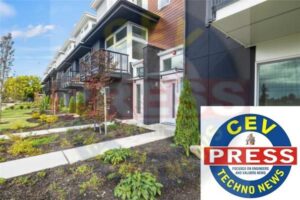GREEN REAL ESTATE AND ITS INFLUENCE ON CAPITALIZATION RATES
Introduction: Green real estate, encompassing environmentally sustainable practices in construction and operation, is gaining prominence in India’s real estate sector. This article explores the impact of green initiatives on capitalization rates within the Indian real estate market.
Growing Trend of Green Real Estate:
- Government Initiatives: Indian government policies incentivize sustainable building practices through schemes like Leadership in Energy and Environmental Design (LEED) certification and Green Building Councils.
- Consumer Awareness: Increasing environmental consciousness among buyers and tenants drives demand for green buildings, fostering the adoption of eco-friendly features.
- Corporate Responsibility: Many businesses prioritize sustainability in their operations, leading to a preference for green office spaces, which influences developers’ choices.
Influence on Capitalization Rates:
- Higher Initial Costs: Incorporating green features during construction typically entails higher upfront investment, impacting initial capitalization rates.
- Operational Savings: Green buildings offer reduced operating expenses through energy efficiency and resource conservation, potentially offsetting initial costs.
- Enhanced Asset Value: Sustainable buildings often command higher rental premiums and resale values, leading to favorable long-term capitalization rates.
- Market Perception: Investors increasingly value sustainable properties, potentially leading to lower capitalization rates for green assets due to higher demand.
Case Studies and Market Dynamics:
- Commercial Sector: Green office spaces in major Indian cities exhibit lower vacancy rates and higher rental yields, reflecting the market’s preference for sustainable buildings.
- Residential Sector: Green residential projects attract discerning buyers willing to pay premium prices, influencing capitalization rates in favor of sustainable developments.

Challenges and Opportunities:
- Cost-Benefit Analysis: Developers face the challenge of balancing upfront costs with long-term benefits, requiring careful evaluation of green initiatives’ financial viability.
- Regulatory Compliance: Adhering to evolving green building standards and regulations presents both challenges and opportunities for developers navigating the sustainability landscape.
- Innovation and Collaboration: Continued innovation in green technologies and collaboration between stakeholders can drive down costs and accelerate the mainstream adoption of sustainable practices.
Green real estate is reshaping India’s property market, with significant implications for capitalization rates. While initial investment hurdles exist, the long-term financial benefits, coupled with growing consumer demand and regulatory support, position sustainable buildings as attractive assets for investors and developers alike. As the market continues to evolve, embracing sustainability is not just a choice but a strategic imperative for stakeholders seeking to capitalize on the shifting dynamics of India’s real estate sector.


